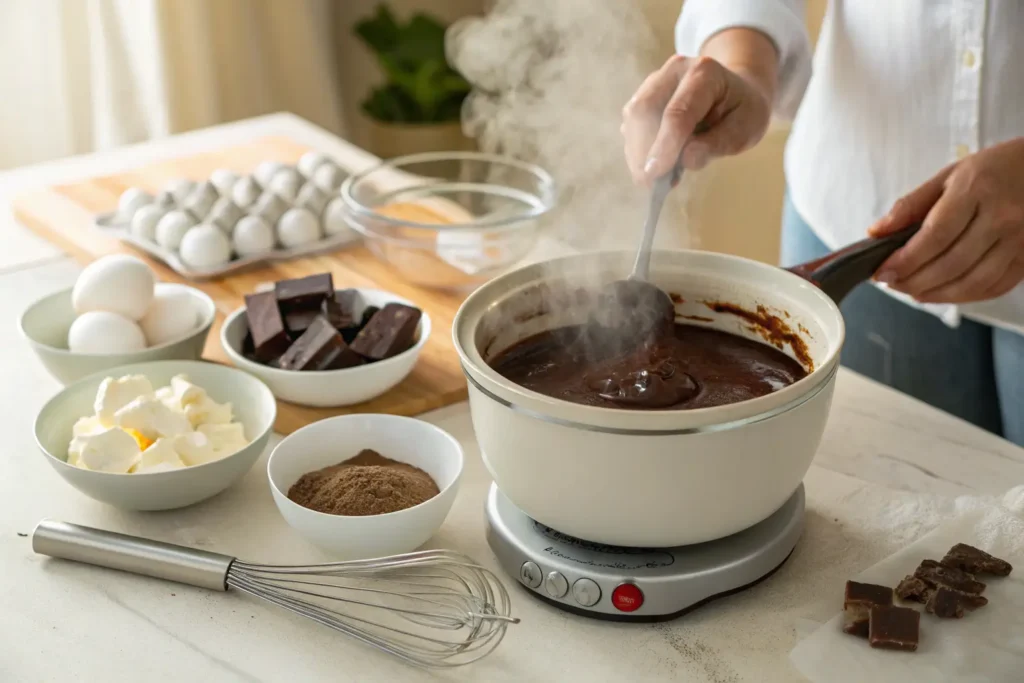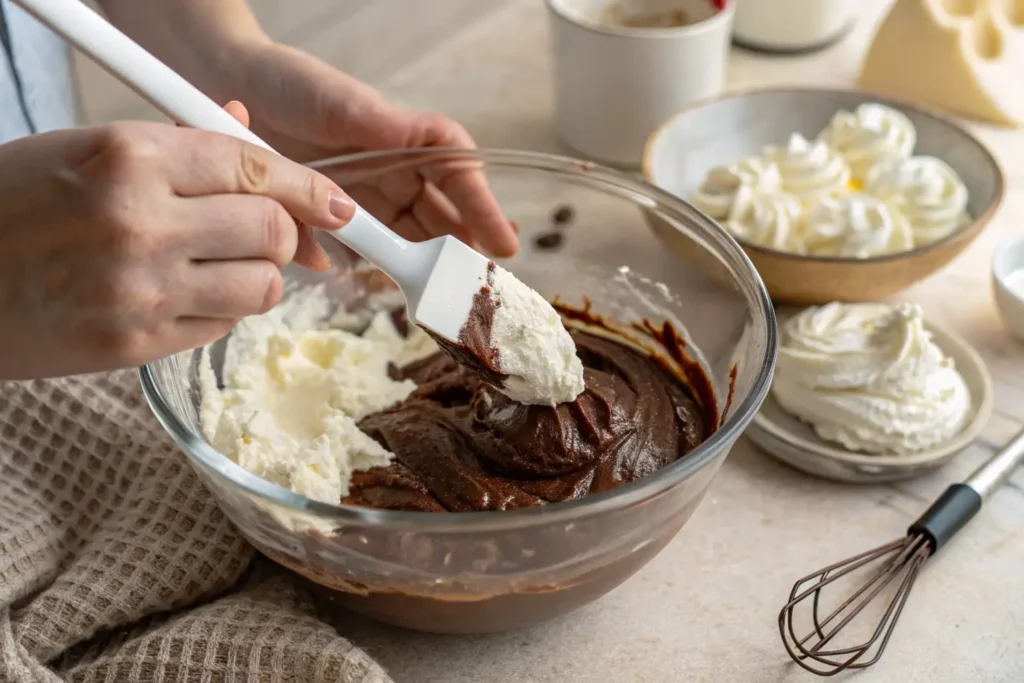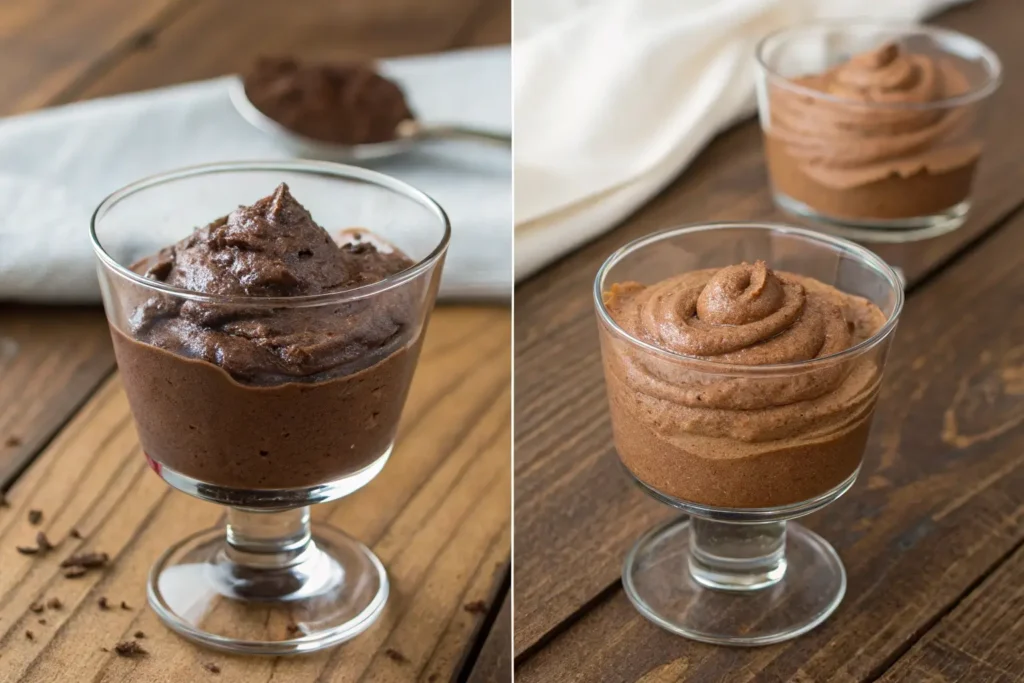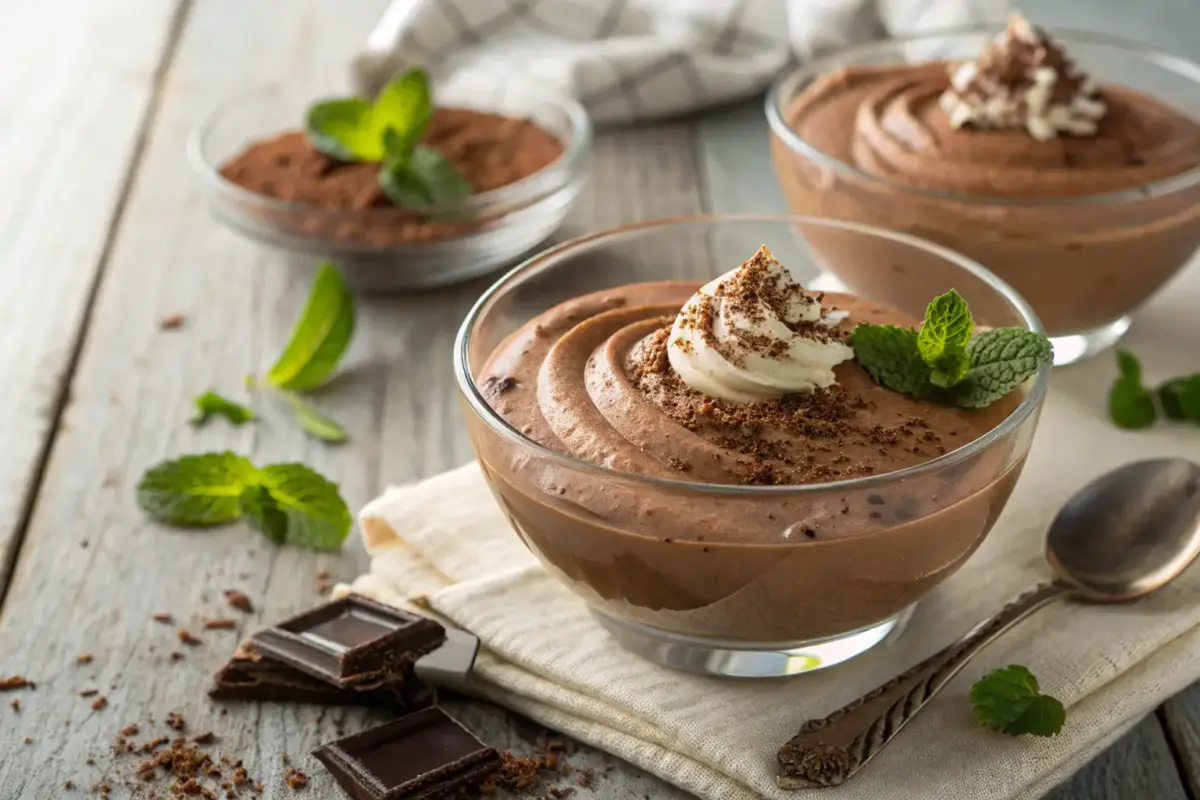Introduction
Have you ever wondered, “Why does my chocolate mousse go lumpy?” It’s one of those kitchen mysteries that can make or break dessert night. Whether you’re prepping for a family dinner or impressing your guests, a smooth and creamy chocolate mousse is the goal. But lumps? Yeah, those aren’t invited. In this article, we’ll break down the basics of chocolate mousse and uncover what might be going wrong when things get, well, less than perfect.
If you’re looking for a twist on the classic, consider trying this Cottage Cheese Chocolate Mousse for a unique take.
Understanding the Basics of Chocolate Mousse
What Is Chocolate Mousse?
Chocolate mousse is a classic dessert that’s rich, airy, and oh-so-decadent. The word “mousse” comes from French, meaning “foam,” which perfectly describes its light and fluffy texture. The base of a chocolate mousse typically includes melted chocolate, whipped cream, and sometimes egg whites or yolks. It’s a perfect balance of smoothness and structure, but when something goes wrong, you might find yourself asking, “Why does my chocolate mousse go lumpy?”
Key Ingredients and Their Roles in Texture
The magic of chocolate mousse lies in its ingredients working together seamlessly. Each one plays a crucial role in creating that melt-in-your-mouth experience:
- Chocolate: The star of the show! Chocolate provides the flavor and forms the base of the mousse. It needs to melt smoothly to avoid lumps.
- Cream: Whipped cream adds richness and volume, giving the mousse its light, fluffy texture.
- Egg whites: When whipped to stiff peaks, egg whites add airiness. (Optional but common in traditional recipes.)
- Egg yolks: Yolks add richness and help with emulsifying the mixture, making it silky.
If any of these ingredients aren’t treated just right, lumps can sneak in, leaving you wondering, “Why does my chocolate mousse go lumpy?”
Common Causes of Lumpy Chocolate Mousse
Seizing of Chocolate During Melting
One of the most common reasons people ask, “Why does my chocolate mousse go lumpy?” is because the chocolate seizes while melting. Chocolate seizing happens when moisture gets into the chocolate, causing it to clump into a grainy mess. This can happen if you use a wet bowl or overheat the chocolate.
Incorrect Temperature Control
Temperature is everything when it comes to making mousse. If your chocolate is too hot or too cold when you mix it with other ingredients, you might end up with lumps. Chocolate needs to cool slightly after melting but stay fluid enough to blend well.
Poor Chocolate Quality
Using low-quality chocolate can also lead to lumps. Cheap chocolate may contain fillers or inconsistent cocoa butter content, which affects how smoothly it melts. Splurging on a good brand will make you less likely to ask, “Why does my chocolate mousse go lumpy?”
Overwhipping Cream or Egg Whites
Whipping cream or egg whites past their peak can cause curdling, which turns a smooth mousse into a lumpy disaster. When overwhipped, cream turns into butter-like clumps, making it impossible to achieve a smooth texture.
Improper Incorporation of Ingredients
Folding ingredients together is an art, not a science experiment. Rushing through this step or stirring too aggressively can deflate your mousse or create pockets of unmixed chocolate. Slow and steady wins the race here!
To dive deeper into these pitfalls and how to avoid them, check out What Can Go Wrong When Making Chocolate Mousse?.
The Role of Temperature in Preventing Lumps

The Ideal Temperature for Melting Chocolate
If you’ve ever stood over a pot of melting chocolate, holding your breath and crossing your fingers, you’re not alone. Temperature is one of the main reasons people wonder, “Why does my chocolate mousse go lumpy?” Chocolate is finicky, and overheating it can lead to seizing, while underheating might leave chunks unmelted. Aim for a gentle heat—between 104°F and 113°F is ideal for melting chocolate. Using a double boiler or microwave in short bursts (stirring in between) helps keep things under control.
Cooling Chocolate Before Mixing
Here’s a pro tip: never mix hot chocolate straight into cold cream or egg whites. This temperature clash can create lumps faster than you can say, “Why does my chocolate mousse go lumpy?” Once your chocolate is melted, let it cool slightly until it’s warm but not hot—around 95°F. At this point, it’s ready to combine without shocking the other ingredients.
Tips for Mixing Chocolate and Other Ingredients
How to Fold Ingredients Without Breaking the Emulsion

Folding is a gentle technique that’s key to getting a mousse that’s light and smooth. If you stir too aggressively, you’ll deflate the air you worked so hard to whip into your cream or egg whites. Instead, use a spatula and gently scoop from the bottom, lifting the mixture and folding it over itself. Repeat this motion until the ingredients are combined. Take your time—it’s worth it!
Avoiding Overmixing During the Process
Overmixing is another culprit when people ask, “Why does my chocolate mousse go lumpy?” It’s tempting to keep stirring to make sure everything is fully blended, but resist the urge! Overmixing can break the emulsion, causing the chocolate to separate from the cream. Stop as soon as everything looks smooth and uniform.
Choosing the Right Chocolate for Mousse
The Importance of Cocoa Content
The type of chocolate you use matters—a lot. Lower-quality chocolate often contains more sugar and less cocoa butter, which can lead to lumps and a less stable mousse. For the best results, splurge on a good brand. And if you’re in the mood for more chocolate treats, this Chocolate Pound Cake Recipe might inspire you.
Benefits of Using High-Quality Chocolate
High-quality chocolate isn’t just a luxury; it’s the foundation of a mousse that’s smooth and decadent. When people ask, “Why does my chocolate mousse go lumpy?” the answer often lies in the ingredients. Premium chocolate melts like a dream, without the graininess or fillers you get with cheaper options. It also has a more balanced sweetness, which means your mousse will taste better and look flawless.
Practical Tips for Success
At this point, you’ve learned about the importance of temperature, mixing techniques, and chocolate quality. Still, it’s worth repeating that patience is your best friend when making mousse. If you’ve been asking, “Why does my chocolate mousse go lumpy?” remember that Rushing through steps like cooling chocolate or folding ingredients can lead to a lumpy mess. Mousse-making is all about precision. And if you’re craving more creamy, decadent desserts, why not try something different, like Churro Cheesecake?
Troubleshooting and Fixing Lumpy Mousse

Techniques to Save Seized Chocolate
Let’s be real—seized chocolate can feel like a disaster. But don’t toss it out just yet! If your chocolate has seized, the quickest fix is to add a small amount of liquid. Use warm water, milk, or even cream, one teaspoon at a time, and stir gently. This helps loosen the clumps and bring the chocolate back to a usable consistency. It’s a lifesaver when people ask, “Why does my chocolate mousse go lumpy?”
Straining for a Smoother Texture
If your mousse already has lumps, straining is your best option. Grab a fine mesh sieve and gently push the mousse through using a spatula. This won’t completely fix overmixed or seized chocolate, but it can smooth out smaller lumps and salvage the dessert. While it’s not a perfect solution, it’ll keep you from answering, “Why does my chocolate mousse go lumpy?” with “I have no idea.”
Mistakes to Avoid When Making Chocolate Mousse
Overheating the Chocolate
Overheating is one of the biggest culprits when people ask, “Why does my chocolate mousse go lumpy?” Chocolate is delicate, and excessive heat breaks it down into a grainy, unusable mess. Always melt chocolate gently using a double boiler or microwave in short intervals, stirring often to prevent scorching.
Adding Cold Liquids to Warm Chocolate
Mixing cold liquids, like cream, into warm chocolate is a recipe for disaster. This causes the chocolate to seize, leaving behind stubborn lumps. To avoid this, make sure all your ingredients are at room temperature or slightly warm before combining them. It’s one of those small steps that makes a huge difference.
Skipping the Tempering Step
If you skip tempering your chocolate, it’s no surprise you’re wondering, “Why does my chocolate mousse go lumpy?” Tempering is the process of cooling melted chocolate slightly before mixing it with other ingredients. It ensures that the chocolate blends smoothly and evenly into the mousse.
Best Practices for Consistently Smooth Chocolate Mousse
Prepping Ingredients Correctly
Getting smooth mousse starts with proper preparation. Make sure your chocolate is chopped into small, even pieces for consistent melting. Let your eggs, cream, and other ingredients reach room temperature before starting. This prevents sudden temperature changes that could lead to lumps.
Following Recipe Guidelines Strictly
Chocolate mousse isn’t the time for “a little of this, a little of that.” Stick to the recipe, especially when it comes to ingredient proportions and timing. Recipes are designed to guide you past common pitfalls, so trust the process and save yourself from asking, “Why does my chocolate mousse go lumpy?”
Practicing Patience and Precision
Rushing through steps like cooling chocolate or folding ingredients can lead to a lumpy mess. Slow down and focus on each stage, whether it’s melting, tempering, or folding. Mousse-making is all about precision, and a little extra care goes a long way.
Frequently Asked Questions
How do you get lumps out of chocolate mousse?
If you end up with lumps in your mousse, strain it through a fine mesh sieve to remove the clumps. If the lumps are caused by seized chocolate, try adding a bit of warm liquid to the chocolate and stirring to smooth it out before folding it into the mixture.
Why is my chocolate mousse chunky?
Chunky mousse usually happens because of temperature issues. If your chocolate is too hot or your cream is too cold, the chocolate can seize and form chunks. Overwhipping the cream or egg whites can also lead to a grainy or chunky texture.
What are common mistakes when making mousse?
Some common mistakes include overheating the chocolate, adding cold ingredients to warm chocolate, skipping tempering, and overmixing. Each of these can lead to a mousse that’s lumpy, grainy, or deflated.
What happens when you over mix mousse?
Overmixing breaks the air bubbles that give mousse its light, fluffy texture. It can also cause the emulsion to break, leaving you with a dense or lumpy dessert. Fold gently to avoid this issue.
Conclusion
There’s nothing worse than putting time and effort into a dessert only to end up asking, “Why does my chocolate mousse go lumpy?” The good news is that with the right techniques, quality ingredients, and a little patience, you can create a silky-smooth mousse every time. Remember to melt your chocolate gently, temper it properly, and fold your ingredients with care. And if things still go wrong? Now you’ve got the tools to troubleshoot and save your dessert. Happy mousse-making!

